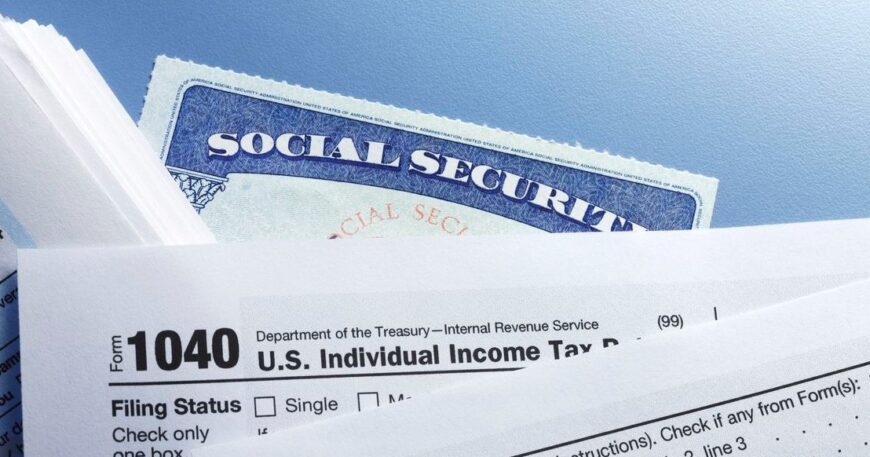You may have observed a form of deduction marked “Social Security taxes ” in the paycheck you were receiving. But what is the tax, and why do you pay it out? Social Security tax is a huge component of the U.S. federal system; it finances the program providing retirement benefits to employees, disabled individuals, and survivors.
How much is the Social Security tax, though, and what can you expect in 2024 and 2025?
This paper shall discuss what you need to know about Social Security tax, details from the present Social Security tax rate, the limit for Social Security tax in 2024, and what you can expect with all this going into 2025.
What is Social Security Tax?
Social Security tax is a type of payroll tax collected for the Social Security program. This program is intended to benefit retiring workers, disabled workers, and their families. The most important component of the social safety net in the United States, the money earned from the tax is used for payment of retirement, disability, and survivor benefits.
Both the working party and employers pay Social Security, and for those who are self-employed, it is a full cost on their personal expense list. Social Security tax is somewhat different from other payroll taxes, such as income tax; however, the difference is that it is taken directly out of your paycheck, much like income tax is.
Social Security Tax Contributions
The Social Security tax rate is typically split between the worker and his or her employer for most workers. The employee pays 6.2 percent of his earnings and the employer matches this amount with another 6.2 percent. As a self-employed individual, you pay both portions for a total of 12.4 percent.
Example: How Social Security Tax Works
If you make $50,000 a year, you would pay 6.2% of that, which is $3,100. Your employer would also pay $3,100 to Social Security on your behalf. If you are self-employed you would pay the full 12.4%, which is 6,200 dollars.
Social Security Tax Rate for 2024
The Social Security tax rate is also the same in 2024 as it has been for many years. Both the employee and employer will pay 6.2%, and self-employed persons continue to pay the full 12.4%.
Your earnings, however, are subject to Social Security tax and are not unlimited. There is a maximum taxable income subject to Social Security each year.
What is the Social Security Tax Limit in 2024?
The Social Security tax limit is at $160,200 for 2024. That translates to means you are subjected only to tax up to the first $160,200 of your earnings. By Social Security taxes. Anything above this amount will not subject you to a tax levy on Social Security.
Calculation of Tax Limit for 2024
Highest earnings taxable for Social Security tax: $160,200
Percentage tax: 6.2% – Employee
Total Social Security tax: 6.2% of earnings up to $160,200
Once you earn more than the amount that Social Security taxes will tolerate. Then you will stop paying Social Security once your income is above that level.
Why Should There be a Social Security Tax Limit?
Social Security tax limit was created so that an upper limit was applied to the amount subject to Social Security tax. That is, the more that you earn above this level, the smaller fraction of those earnings you are paying once your income reaches the taxing threshold. There is a good reason for the cap in the system. It should be centered on lower- and middle-income workers because Social Security pays out benefits based on replacement. A percentage of your pre-retirement income is based on what you paid during your working career.
How Much is Social Security Tax in 2024?
Social Security tax is paid at 6.2 percent of wages earned in 2024 up to the wage base limit of $160,200. For the person who earns $50,000 a year, this will amount to:
$50,000 x 6.2 percent = $3,100 in social security taxes
If you are self-employed, then you pay the full 12.4 percent, so that amounts to:
$50,000 x 12.4 percent = $6,200 in Social Security taxes for the year.
Social Security Tax vs. Medicare Tax
It must be noted that Social Security taxes are not the same as Medicare taxes. The former is taxed at a 6.2% rate, while the latter is taxed at a 1.45% rate; it applies to all earnings without a cap.
The total payroll tax you therefore pay as an employee is 7.65% (6.2% to Social Security and +1.45% to Medicare). Self-employed individuals pay the full 15.3% tax (12.4% to Social Security + 2.9% to Medicare).
Beyond 2024 What’s next? The Social Security Tax Cap for the Year 2025
Although the Social Security tax limit for the year 2024 is $160,200, you may wonder what that will be for the year 2025. As you can probably guess, the limit is automatically increased yearly by inflation and the national wage index.
We don‘t know what the 2025 value is yet; however, based on previous years, it should be a little higher than this year.
Here is an example:
The 2023 Social Security tax cap was $160,200.
In this scenario, the Social Security tax cap for 2024 is still $160,200. Tax caps for 2025 are anticipated to be higher, but that’s something you won‘t know until later in the year 2024.
Expect that tax limits will go up from year to year, but not drastically so.
How Social Security Tax Impacts Your Retirement
Social Security tax is used to ensure you benefit once you retire. What you have put in your savings during the working years will be what you reap when you retire. Your benefit under Social Security depends on your average indexed monthly earnings or AIME, which comes from your highest 35 working years.
Calculating Social Security Benefits
The SSA bases your Social Security benefits on your earnings throughout your career. In other words, the more you contribute to Social Security over a lifetime, the higher your monthly benefit will be when you retire. However, this will depend on some other factors such as at what age you are eligible for full retirement age (FRA) and at what age you start collecting Social Security.
Full Retirement Age: If you were born in 1960 or later, your FRA will be 67.
Early Retirement: The earliest you can start receiving Social Security benefits is age 62, but the monthly benefit will be less due to a cost-of-living increase.
Delayed Retirement: If you delay the age at which you begin drawing Social Security beyond your FRA until you are 70, your monthly benefit will be greater.
Why Knowing Your Social Security Tax Matters
This understanding is also crucial because it will determine your financial security in old age. The more you know how much you pay and how the system operates. The more assured you can be of yourself as you plan for the future. You should also know about yearly changes to the tax cap; otherwise, your overall tax liability will haunt your dreams.
Future Social Security Tax Planning
Whether you are planning retirement or simply need to know how your taxes are calculated, it is always smart to learn the latest changes in Social Security tax rates and limits. Stay current with the latest SSA releases and then follow the advice of a tax professional. So you are making maximal use of contributions to date.
Expert Guidance in Social Security Taxes by Syed Professional Services
Syed Professional Services is here for your tax planning and financial strategies as an individual or a business. Perhaps you are trying to determine your Social Security taxes or understand what the new tax limits will mean for your future finances.
Our team of experts will guide you every step of the way and ensure that you make well-informed decisions regarding your Social Security contributions and overall tax strategy.
Do you have any questions about the Social Security tax?
Contact Syed Professional Services today for advice specifically developed to suit your particular situation.




